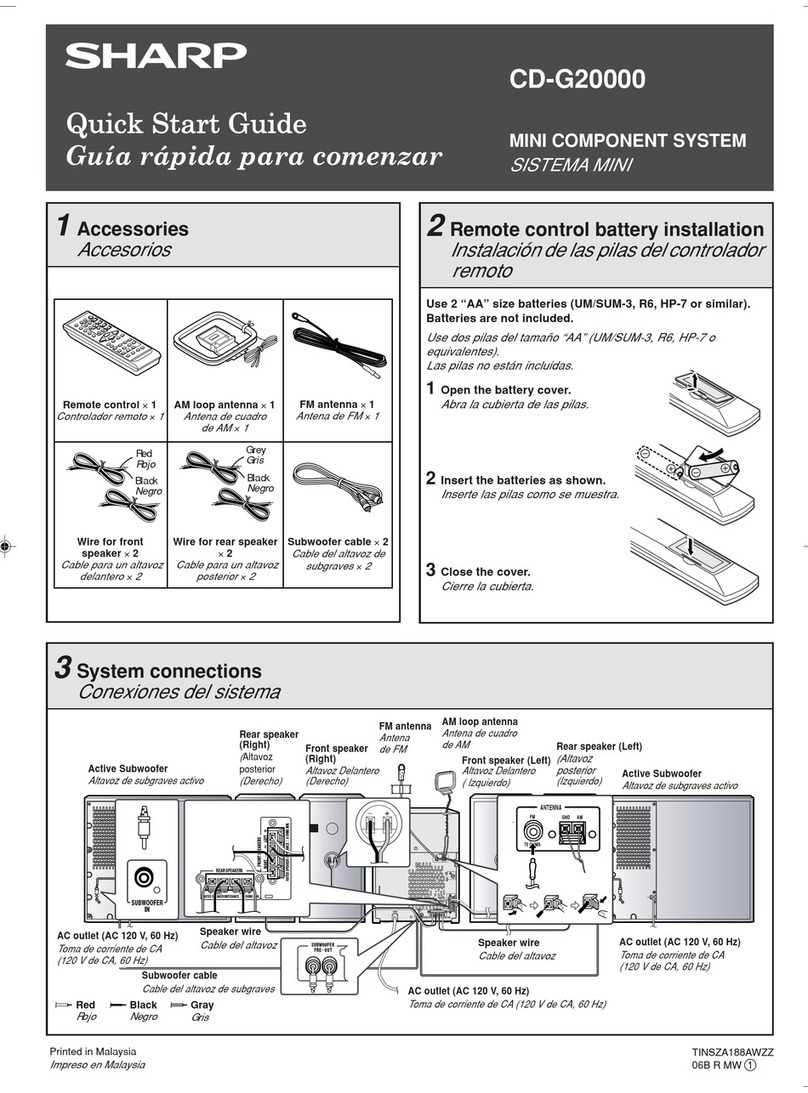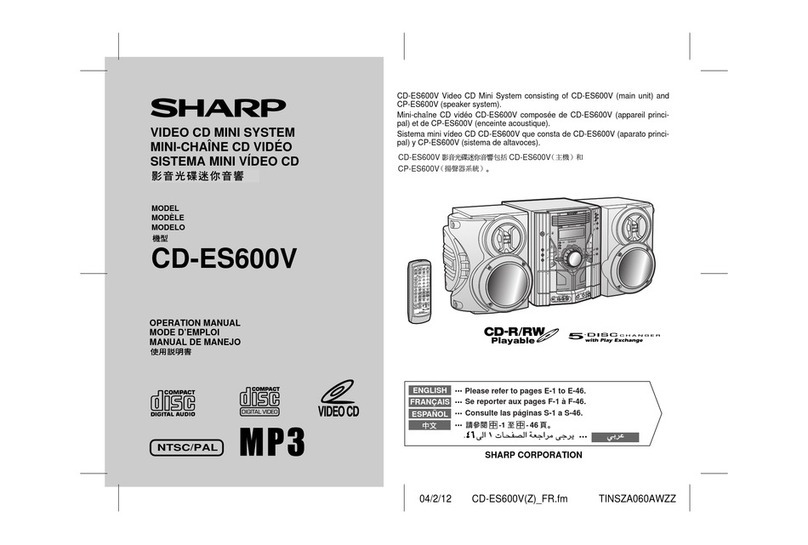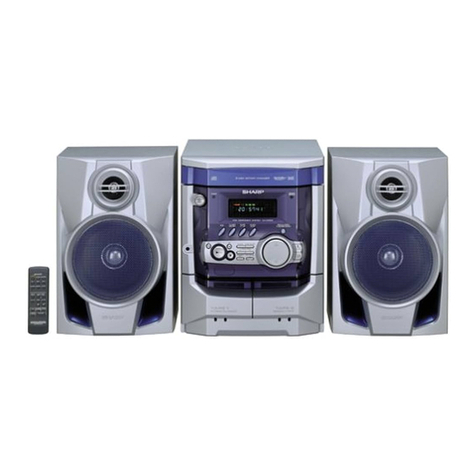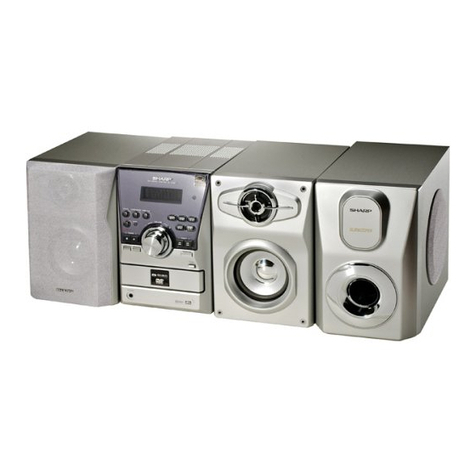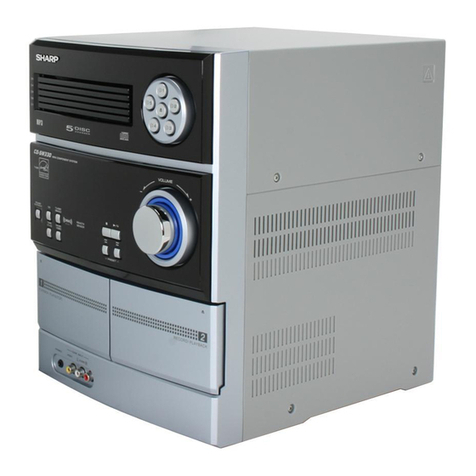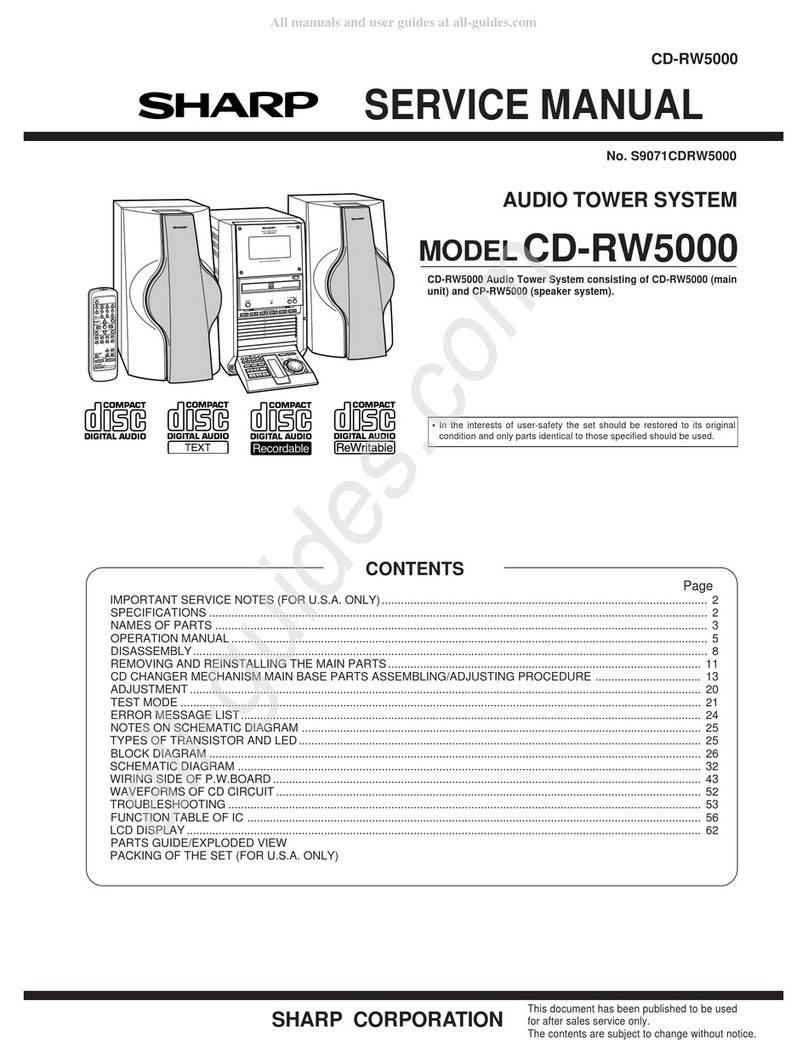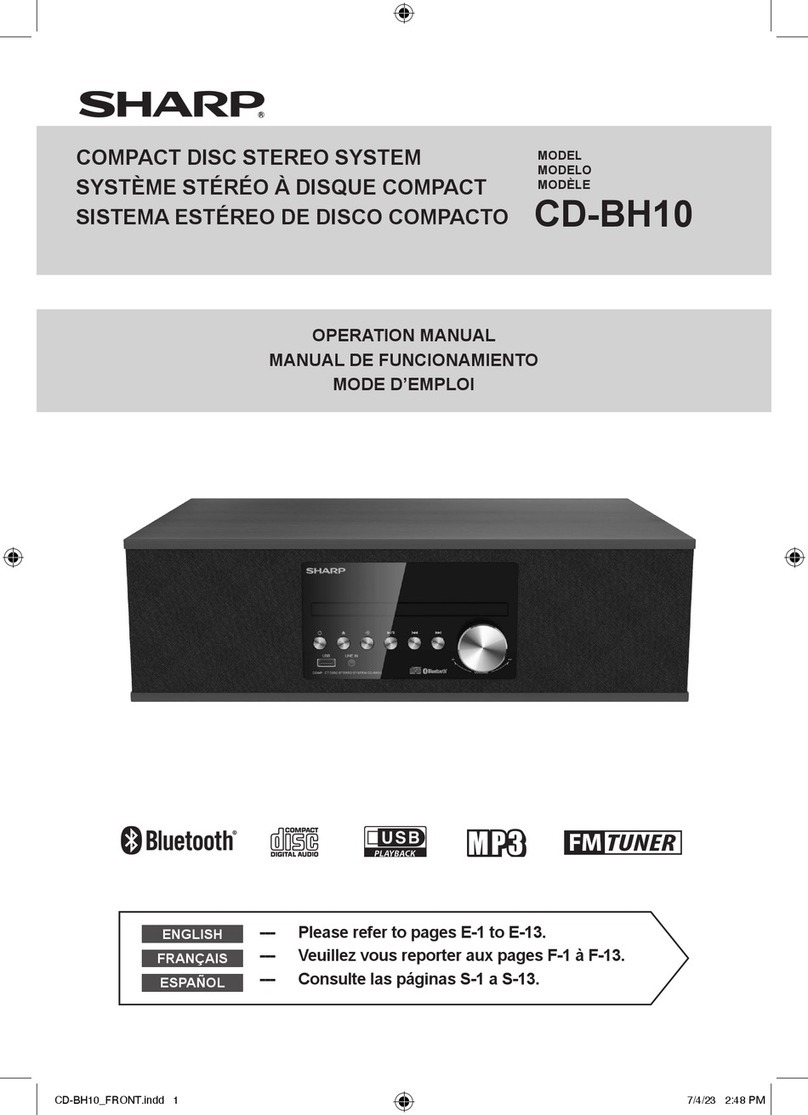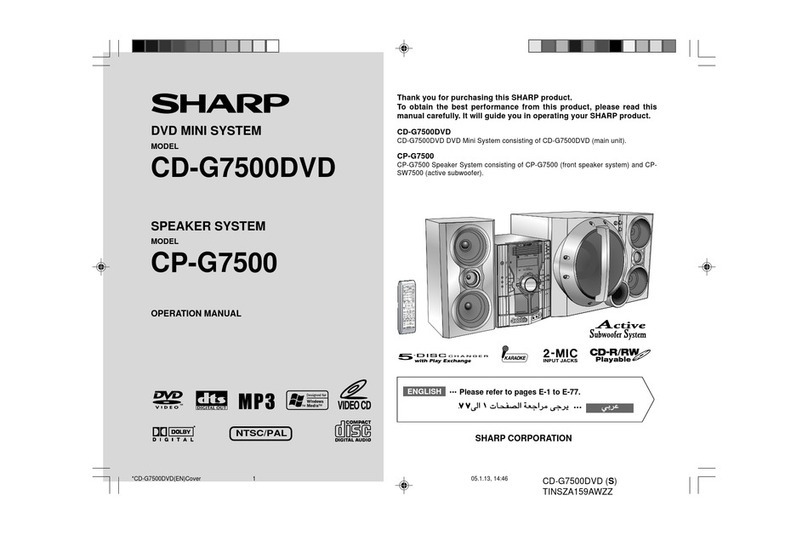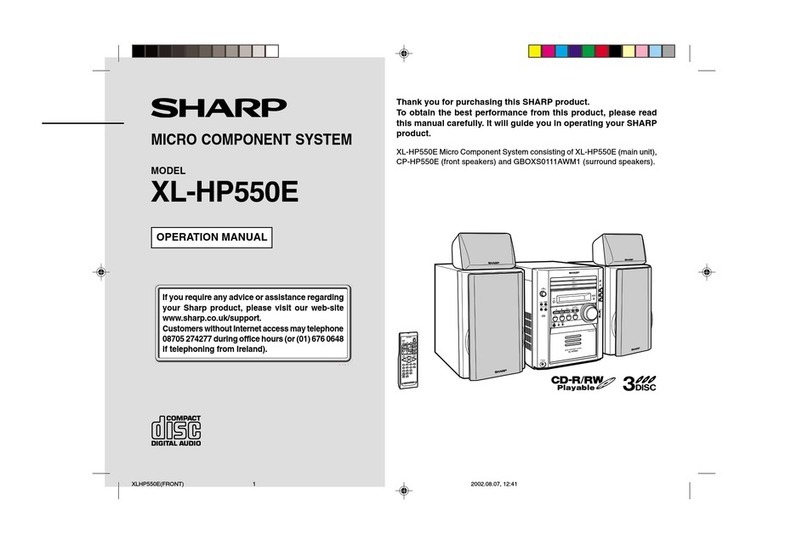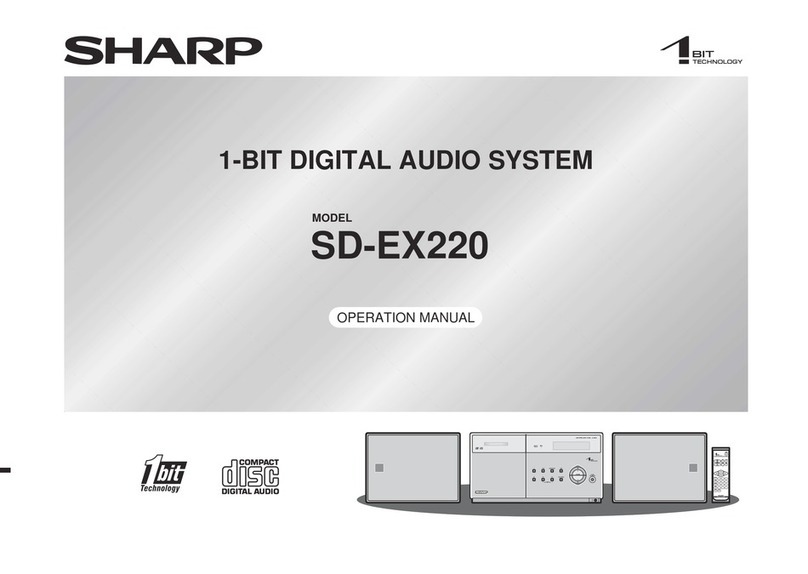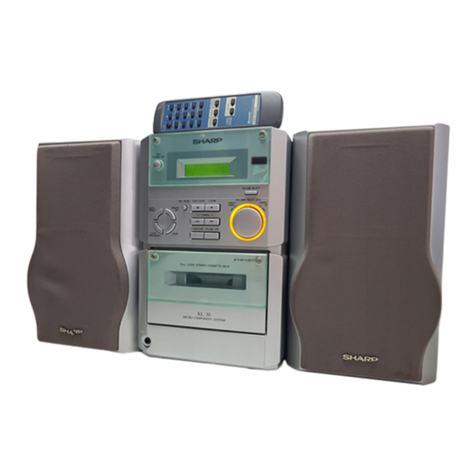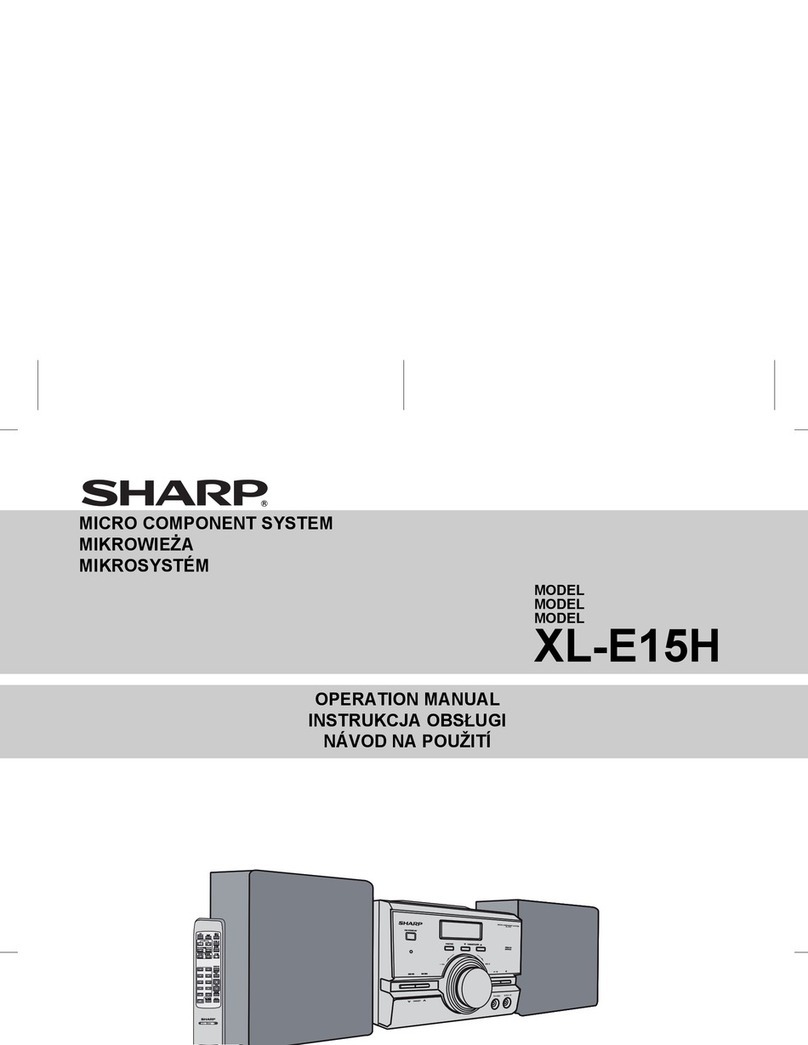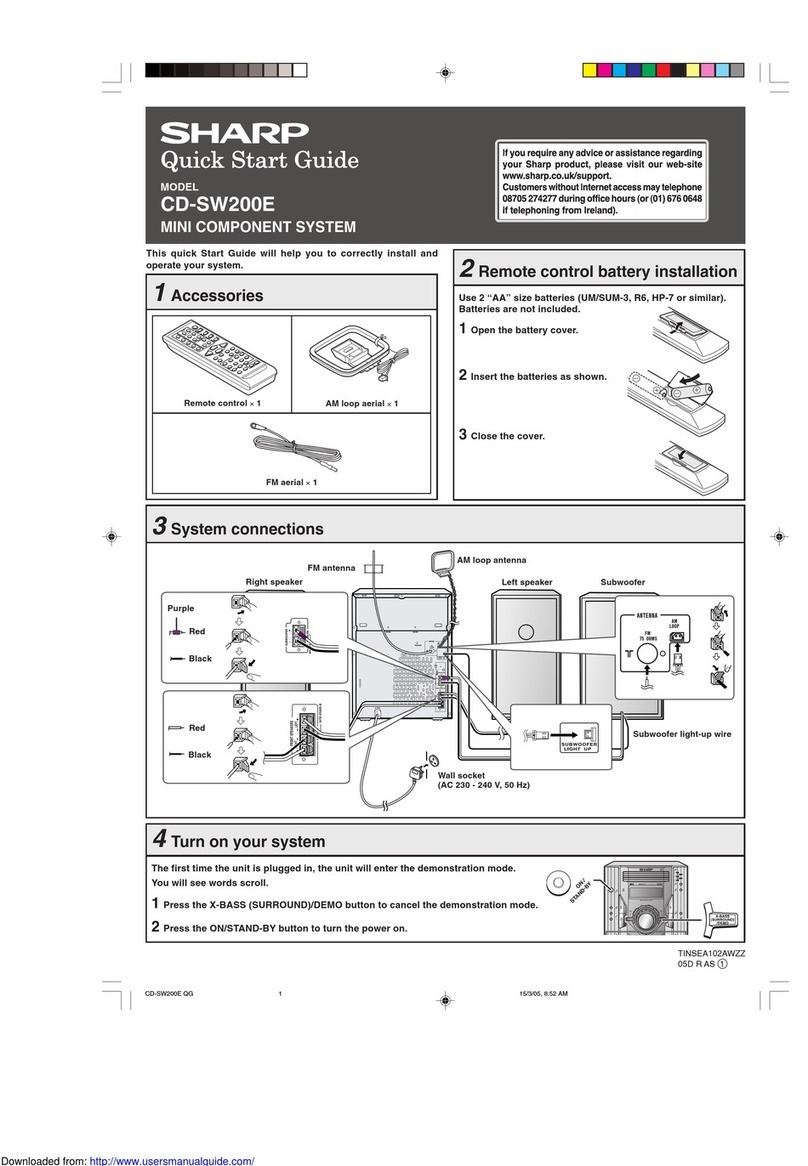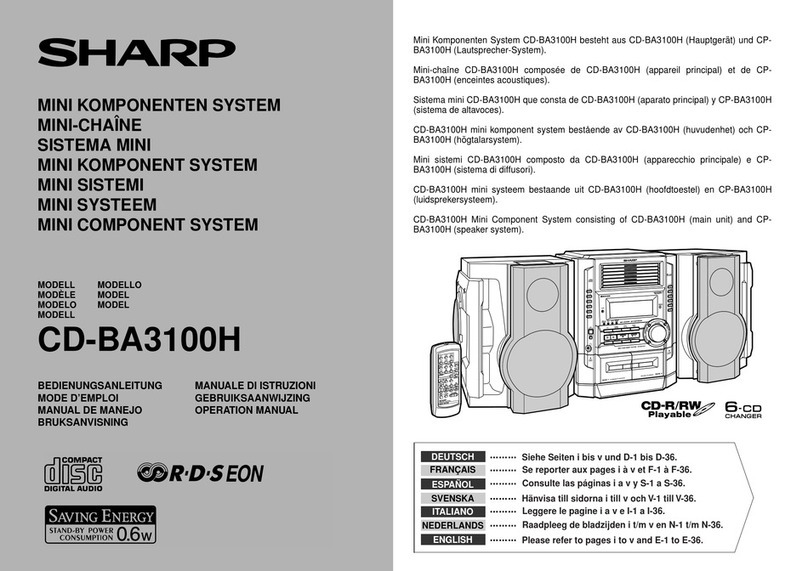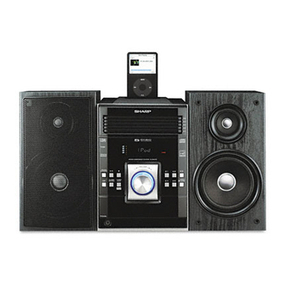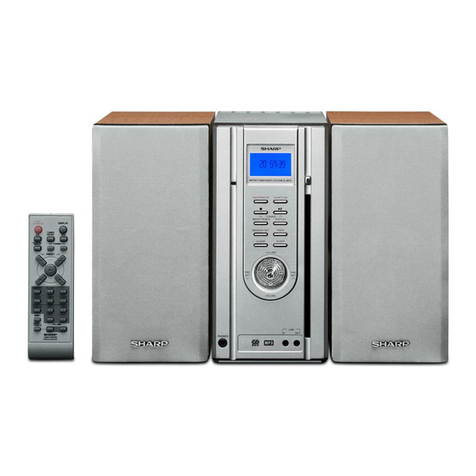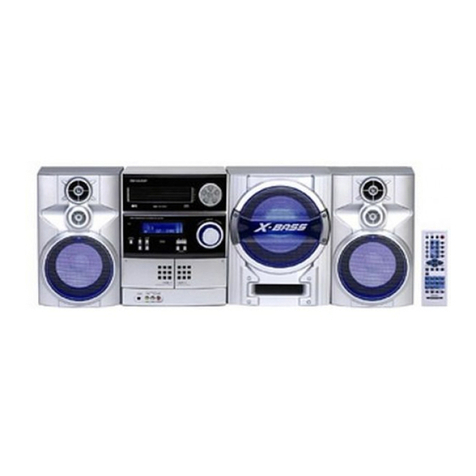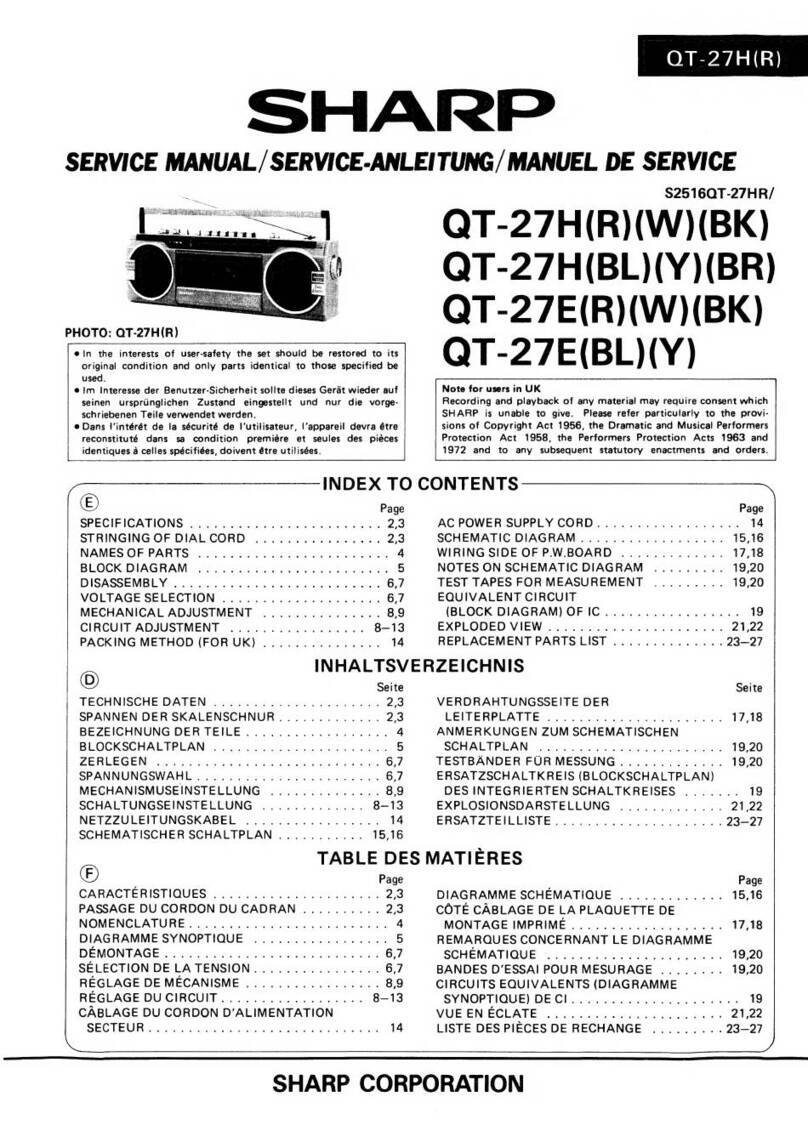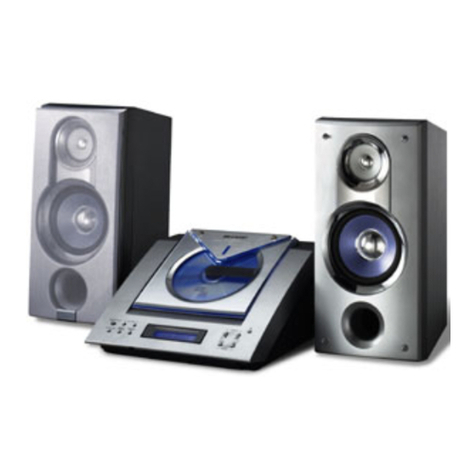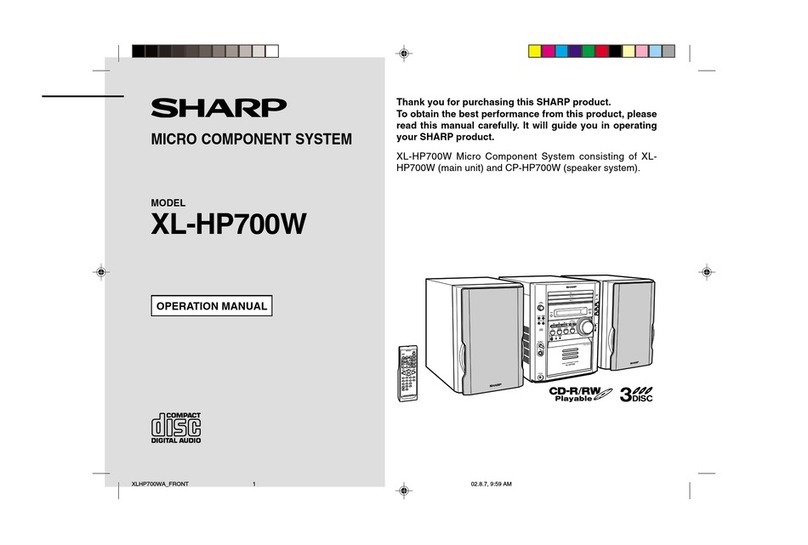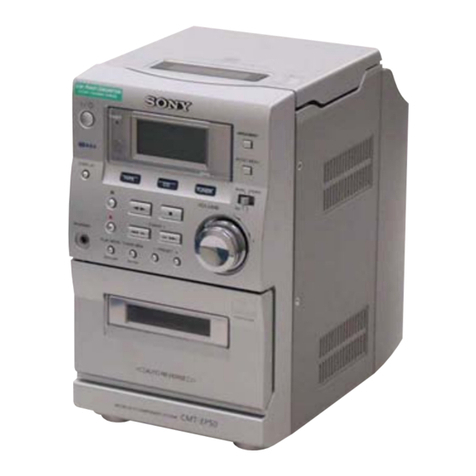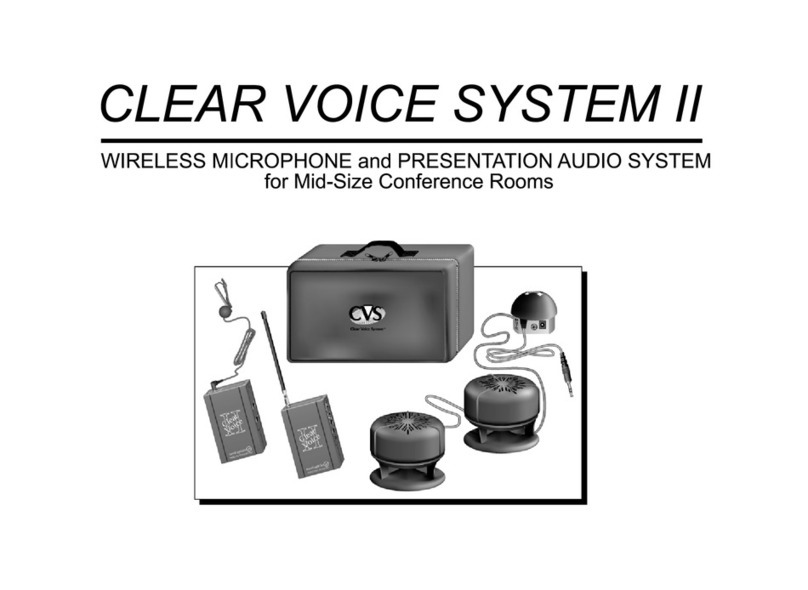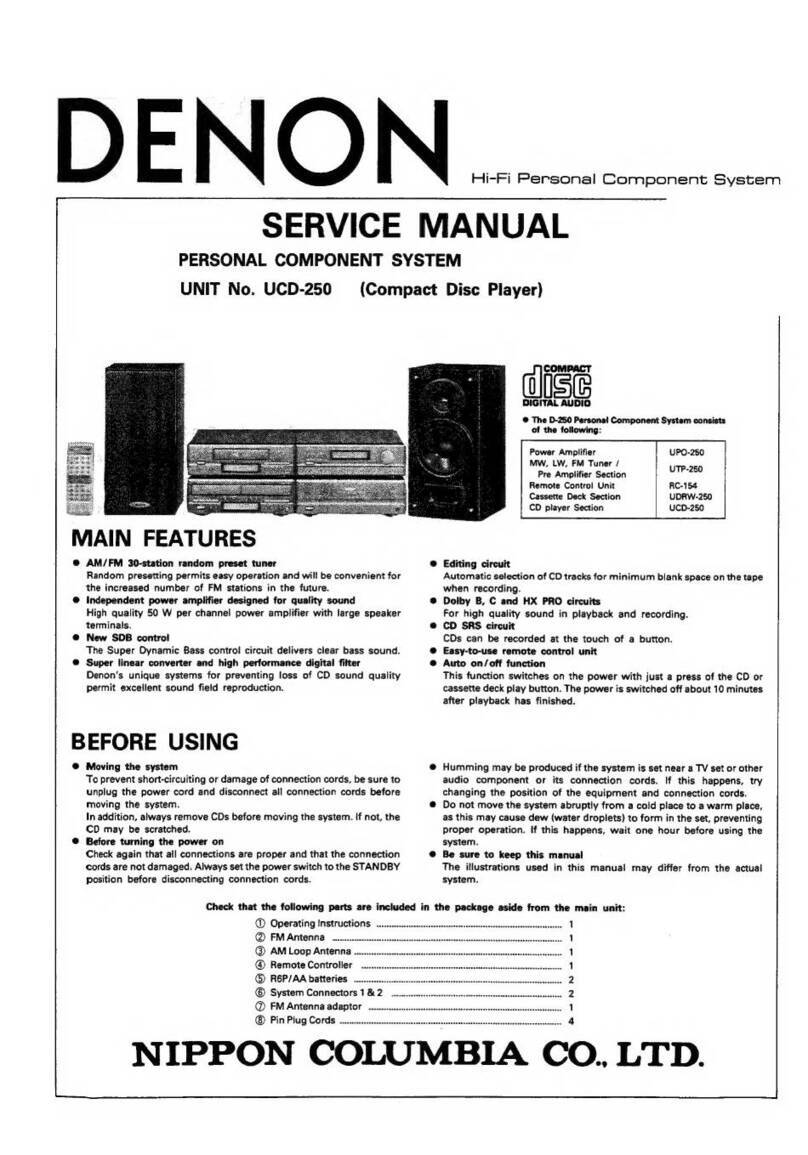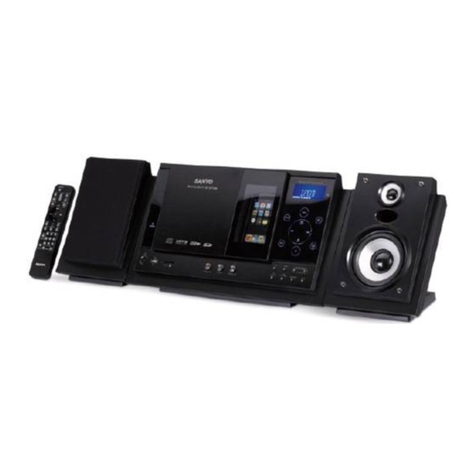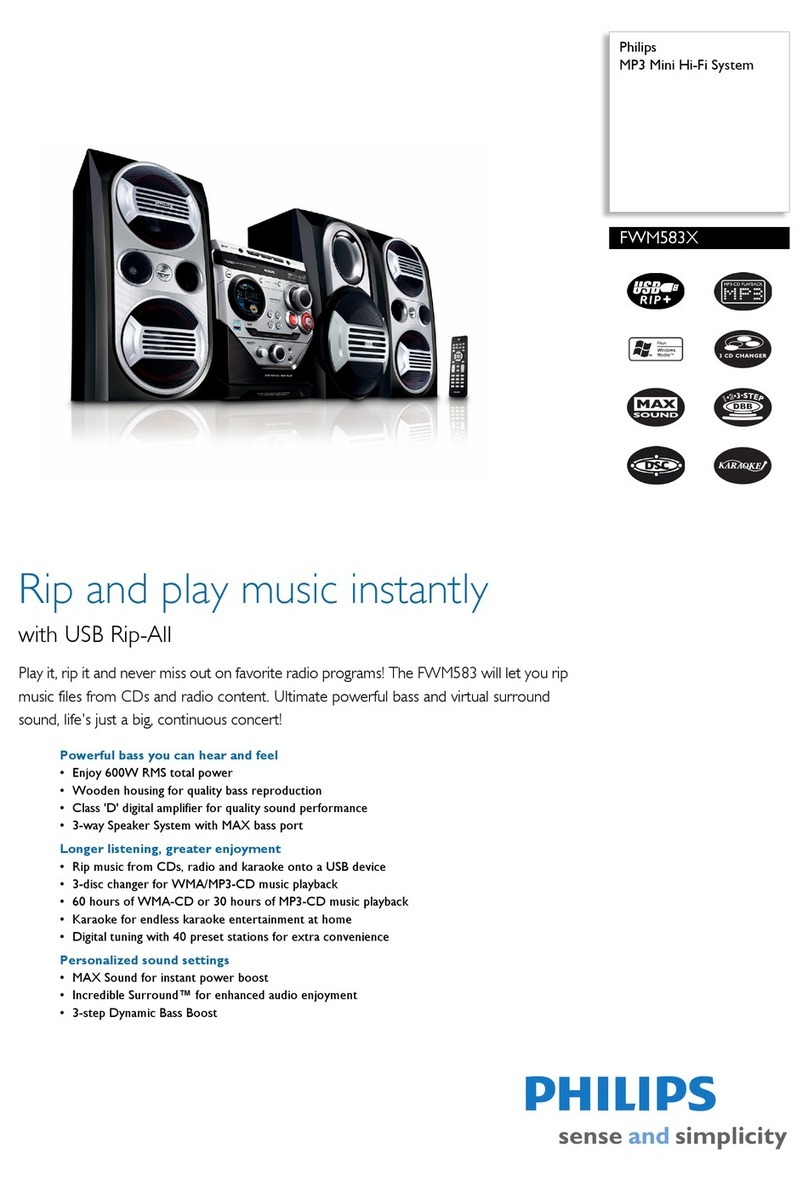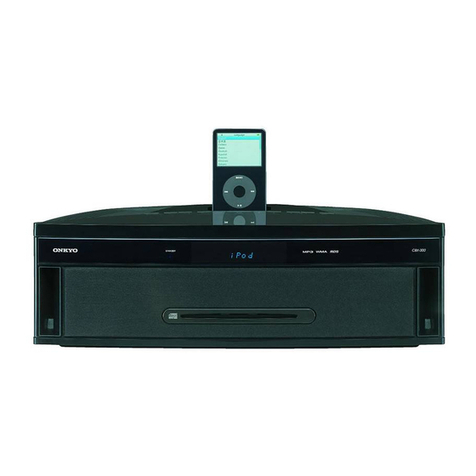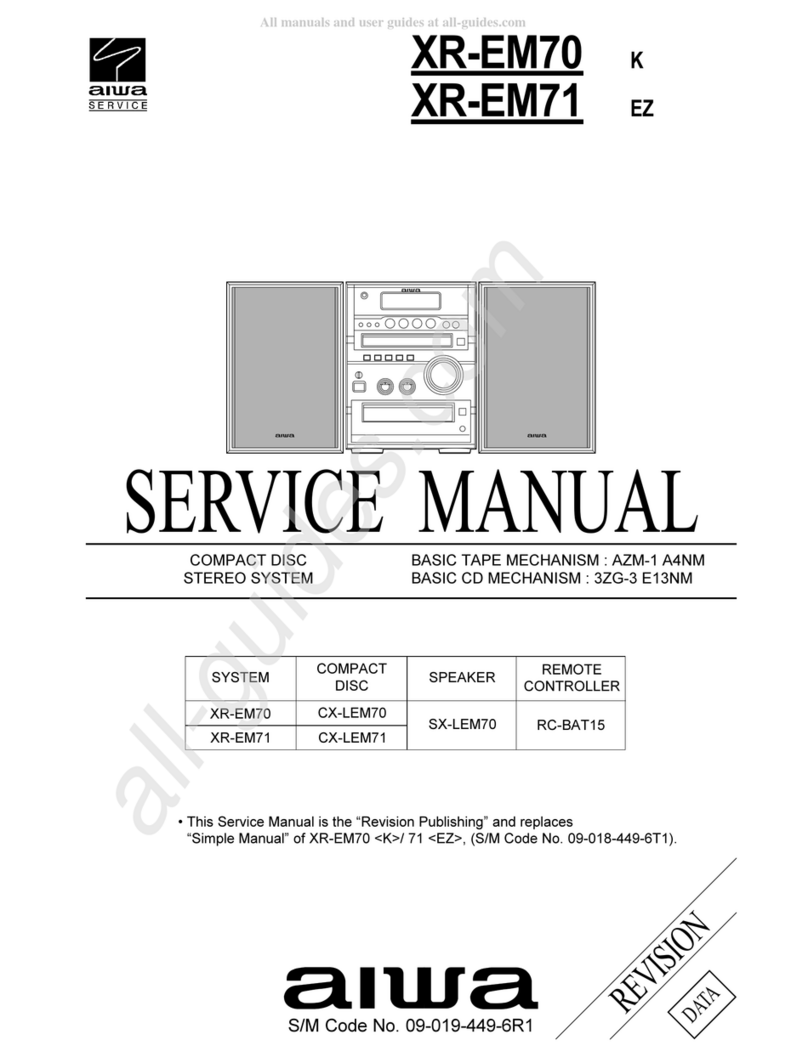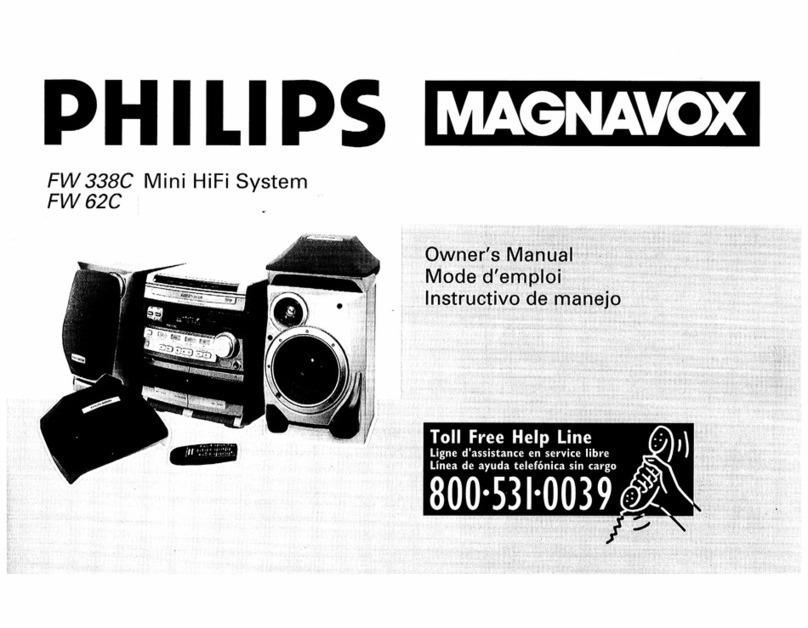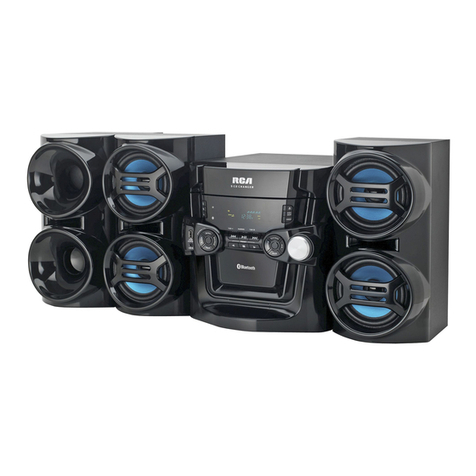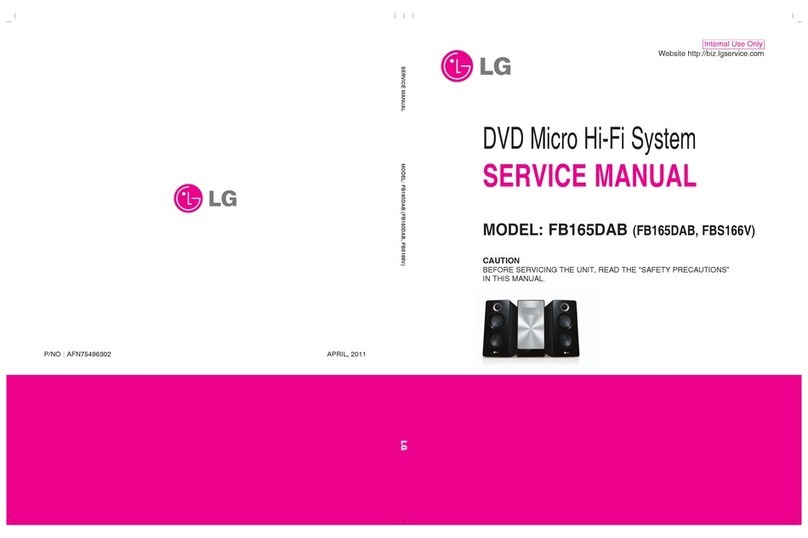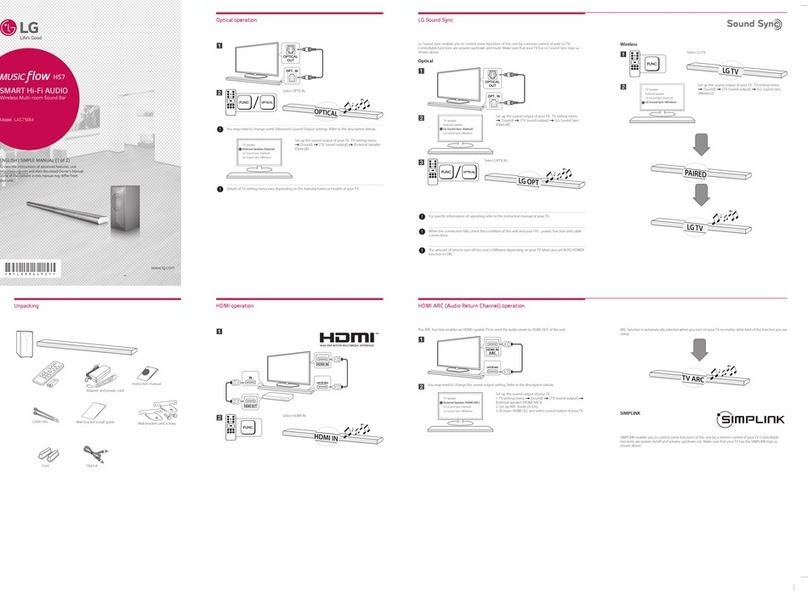
– 3 –
CD-C421H / C411H
SPECIFICATIONS
FOR A COMPLETE DESCRIPTION OF THE OPERATION OF THIS UNIT, PLEASE REFER
TO THE OPERATION MANUAL.
Specifications for this model are subject to change
without prior notice.
CD-C421H
●General
Power source: AC 230 V, 50 Hz
Power consumption: 47 W
Dimensions: Width; 270 mm (10-5/8")
Height; 303 mm (11-13/16")
Depth; 341 mm (13-7/16")
Weight: 4.8 kg (10.6 lbs.)
●Amplifier section
Output power:
(For Germany) PMPO; 120 W (total)
MPO; 60 W (30 W + 30 W)
(DIN 45 324)
RMS; 40 W (20 W + 20 W)
(DIN 45 324)
RMS; 28 W (14 W + 14 W)
(DIN 45 500)
Output power:
(For U.K.) MPO; 60 W (30 W + 30 W)
(10% T.H.D.)
RMS; 40 W (20 W + 20 W)
(10% T.H.D.)
RMS; 28 W (14 W + 14 W)
(0.9% T.H.D.)
Output terminals: Front speakers; 5.4 ohms
Surround speakers; 16 ohms
Headphones; 16-50 ohms
(recommended; 32 ohms)
Input terminals: Video/Auxiliary (audio signal);
245 mV/47 kohms
●Tuner section
Frequency range: FM; 87.5-108 MHz
AM; 522-1,620 kHz
●Cassette deck section
Frequency
response: 50-14,000 Hz (Normal tape)
Signal/noise ratio: 55 dB (TAPE 1, playback)
50 dB (TAPE 2, recording/
playback)
Wow and flutter: 0.2 % (DIN 45 511)
●Compact disc player section
Type: 3-disc multi-play compact disc player
Signal readout: Non-contact, 3-beam semi-
conductor laser pickup
D/A converter: 1-bit D/A converter
Frequency response: 20 - 20,000 Hz
Dynamic range: 90 dB (1 kHz)
●Front speaker section
Type: 2-way [10 cm (4") woofer and 5 cm
(2") tweeter]
Maximum input power:30 W
Impedance: 5.4 ohms
Dimensions: Width; 180 mm (7-1/8")
Height; 300 mm (11-13/16")
Depth; 204 mm (8-1/16")
Weight: 2.1 kg (4.6 lbs.)/each
●Surround speaker section
Type: 10 cm (4") full-range speaker
Maximum input power: 10 W
Impedance: 16 ohms
Dimensions: Width; 170 mm (6-11/16")
Height; 120 mm (4-3/4")
Depth; 175 mm (6-7/8")
Weight: 0.6 kg (1.3 lbs.)/each
●General
Power source: AC 230 V, 50 Hz
Power consumption: 32 W
Dimensions: Width; 270 mm (10-5/8")
Height; 303 mm (11-15/16")
Depth; 341 mm (13-7/16")
Weight: 4.8 kg (10.5 lbs.)
●Amplifier section
Output power:
(For Germany) PMPO; 66 W (total)
MPO; 33 W
(16.5 W + 16.5 W)
(DIN 45 324)
RMS; 20 W (10 W + 10 W)
(DIN 45 324)
RMS; 16 W (8 W + 8 W)
(DIN 45 500)
Output terminals: Speakers; 8 ohms
Headphones; 16-50 ohms
(recommended; 32 ohms)
Input terminals: Video/Auxiliary (audio signal);
245 mV/47 kohms
●Tuner section
Frequency range: FM; 87.5-108 MHz
AM; 522-1,620 kHz
●Cassette deck section
Frequency
response: 50-14,000 Hz (Normal tape)
Signal/noise ratio: 55 dB (TAPE 1, playback)
50 dB (TAPE 2, recording/
playback)
Wow and flutter:
(For Germany)
0.2 % (DIN 45 511)
0.15 % (WRMS)
●Compact disc player section
Type: 3-disc multi-play compact disc player
Signal readout: Non-contact, 3-beam semi-
conductor laser pickup
D/A converter: 1-bit D/A converter
Frequency response: 20 - 20,000 Hz
Dynamic range: 90 dB (1 kHz)
●Speaker section
Type: 100 mm (4") full-range speaker
Maximum input power: 20 W
Impedance: 8 ohms
Dimensions: Width; 180 mm (7-1/8")
Height; 300 mm (11-13/16")
Depth; 204 mm (8-1/16")
Weight: 2.1 kg (4.6 lbs.)/each
Output power:
(For U.K.) MPO; 33 W (16.5 W + 16.5 W)
(10% T.H.D.)
RMS; 20 W (10 W + 10 W)
(10% T.H.D.)
RMS; 16 W (8 W + 8 W)
(0.9% T.H.D.)
(For U.K.)
CD-C411H
